Ken’s been back in touch with his O gauge train turntable:
If you want to get up to speed, his last post is at the bottom of this one.
“Following on from my scratch built 0 gauge turntable I sent you previously.
I had some additional space so put in a water tower with puddles and scratch built a gantry.
The support beam is coffee stirrers, my wife contributed a broken chain necklace which leaving the hook clasp on made a good lifting chain.
I dug into the fibre board base to make an inspection pit brick lined with plasticard and added a work shop.
I scratch built flood lights, added figures and some old sets of carriage wheels to finish the scene off.
Across the bridge and opposite is a goods yard where a wood delivery load is being lifted onto a waiting lorry.
Further along, the fish van is unloading, the two wagons there are the only ones I have seen with sliding doors and are manufactured by Faller.
I bought them very cheaply on eBay and only had to convert them to 3 link chain connectors and change their colour from a very garish yellow and brown to grey!
I am thinking about adding a canal in front of the goods shed but that will be another day!
Thanks for looking
Ken”
Now on to Gary:
“I model in HO. I recently moved and had to tear my layout down and have not started my new one yet. I have big plans for 15 by 19 foot layout.
But last year I helped a friend of mine who is one of my suppliers I buy glass from (I’m in the mirror business) build a O gauge shelf layout that goes around through his business.
He was able to make the tempered glass shelving to put a layout on himself, using GarGraves track because of the realistic wood ties.
The layout runs through three offices a conference room and across a 67 foot hallway where are used three older Lionel bridges.
I painted them with rust oleum rust be gone. Then spray painted them black and weathered them.
Although these probably are not Proto typically real. I made flat carloads with sheets of glass from styrene. Thought I would share some pictures.
When I start on my new layout I was try to share some pictures with you then of it as I build it.
Gary”
And lastly on to Dave:
“Hi Al, just a short one, latest challenge doing the rounds.
How many trucks or coaches you can pull round the layout then reverse round and see if they all keep on the track without derailing.
I managed 14 coaches, I could pull a lot more, but to reverse anything over 14 I had problems
Regards
Dave”
That’s all for today folks.
A big thanks to Ken for sharing his O gauge train turntable, and to Gary and Dave.
Please do keep ’em coming.
And if this post – or any of the others – has made you think you’re missing out on a lot of fun, the Beginner’s Guide is here.
Best
Al

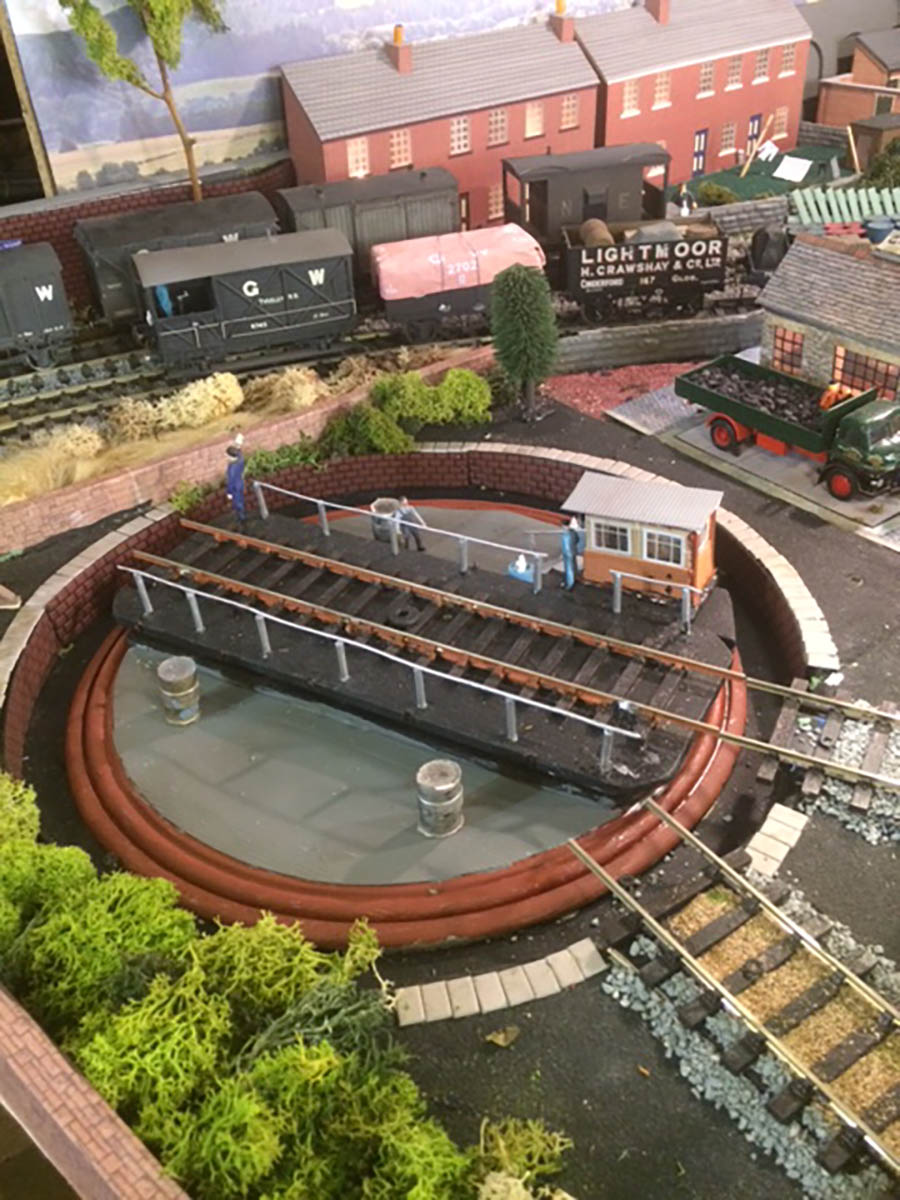
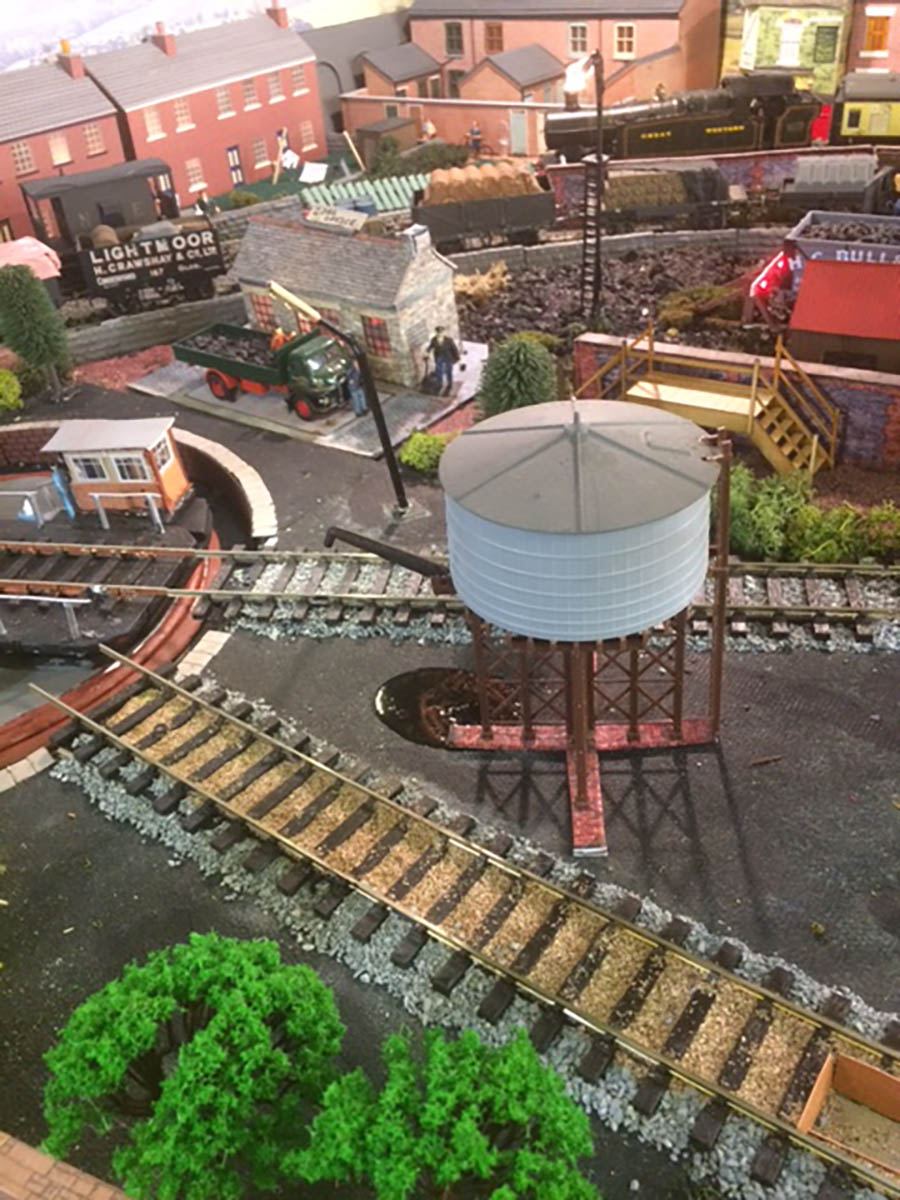
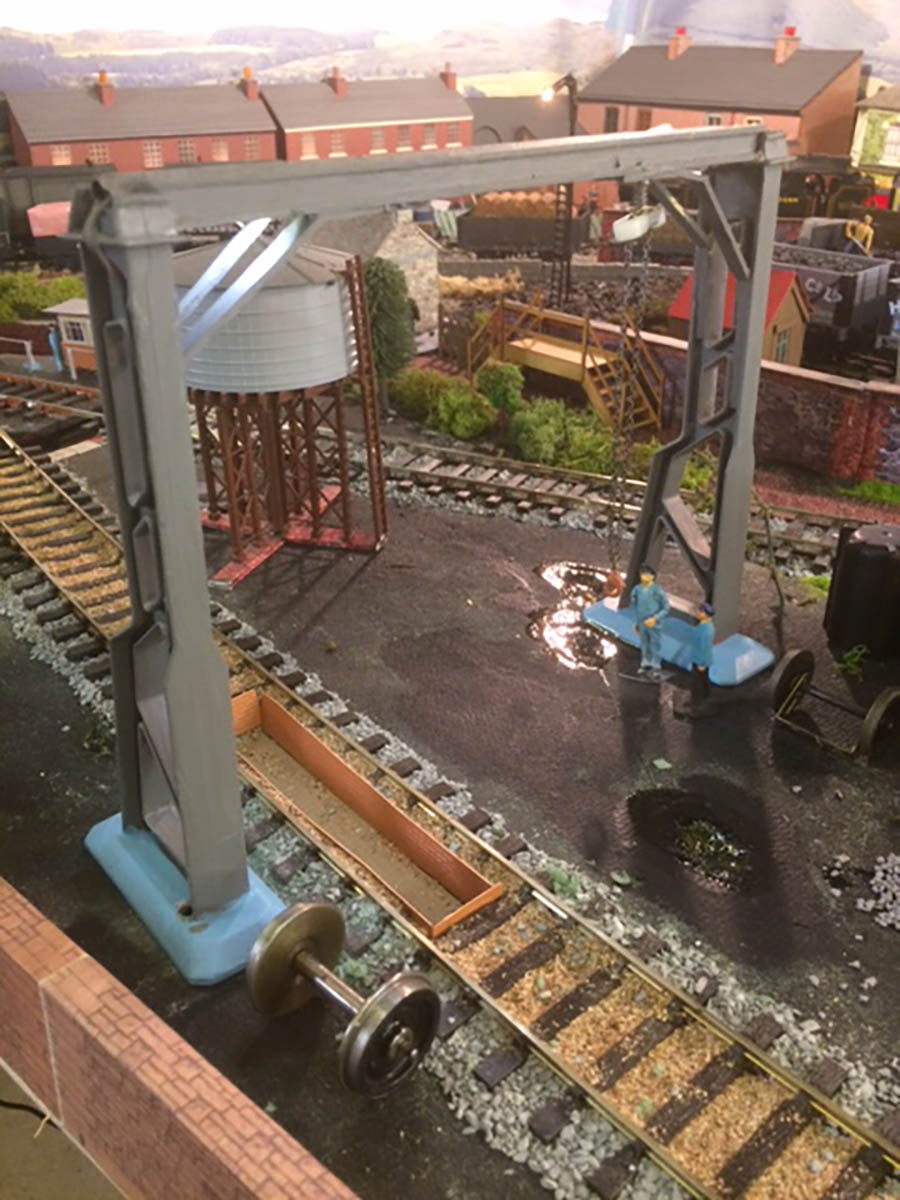
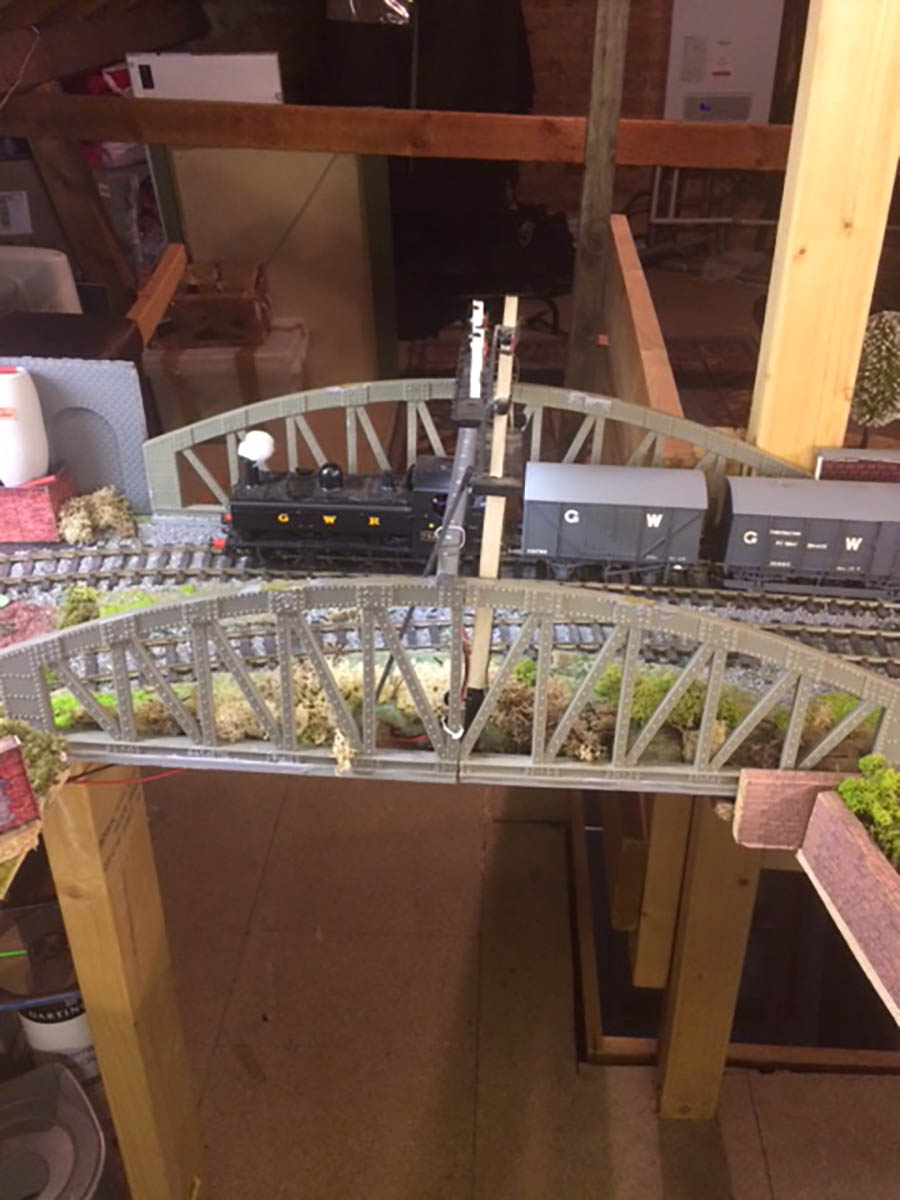

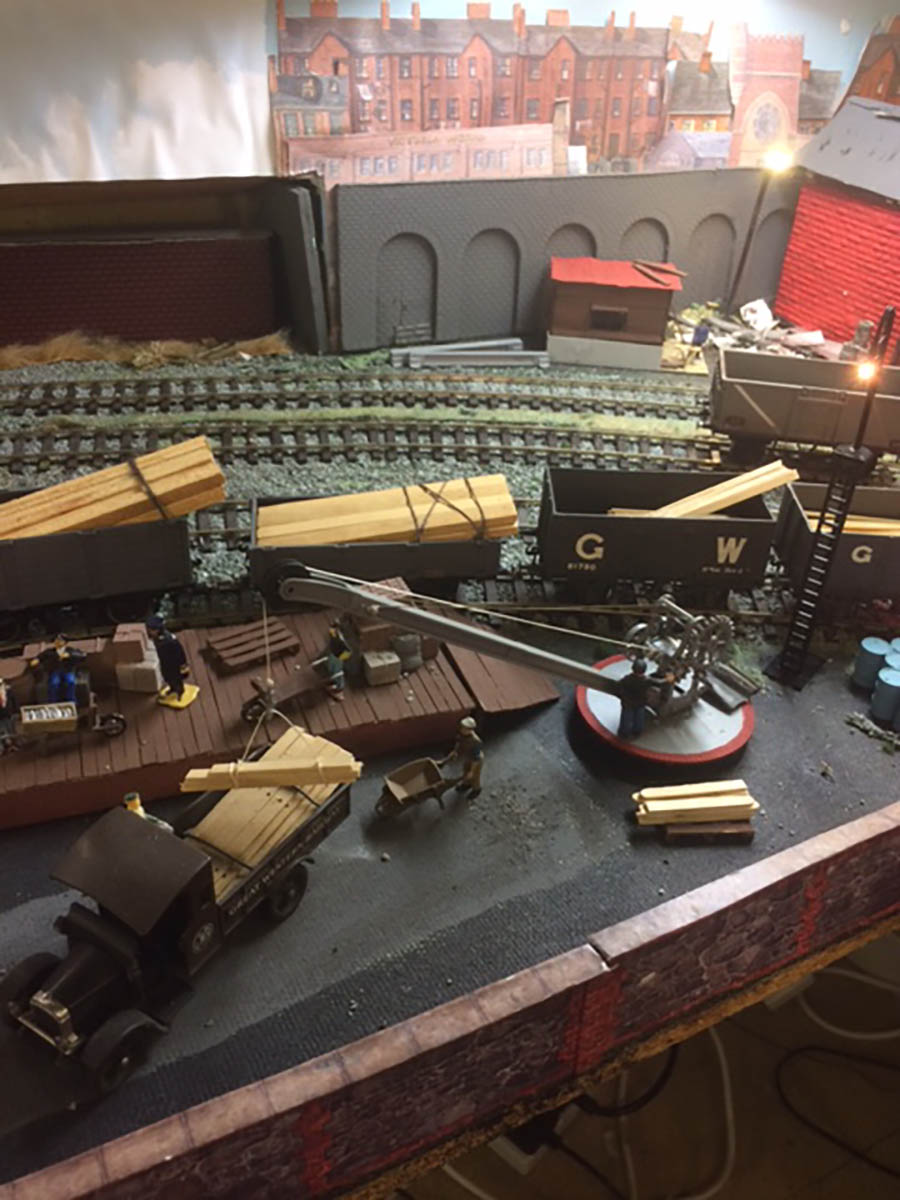

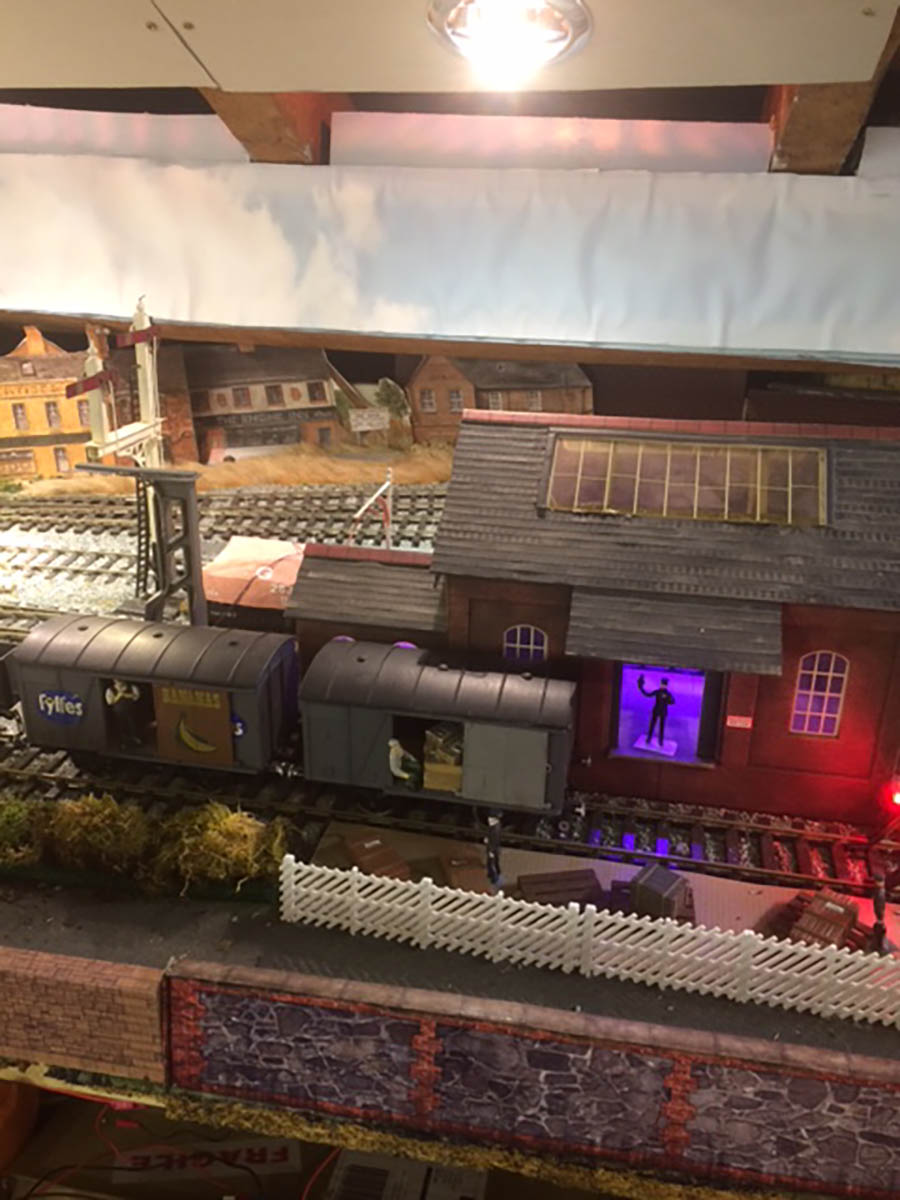


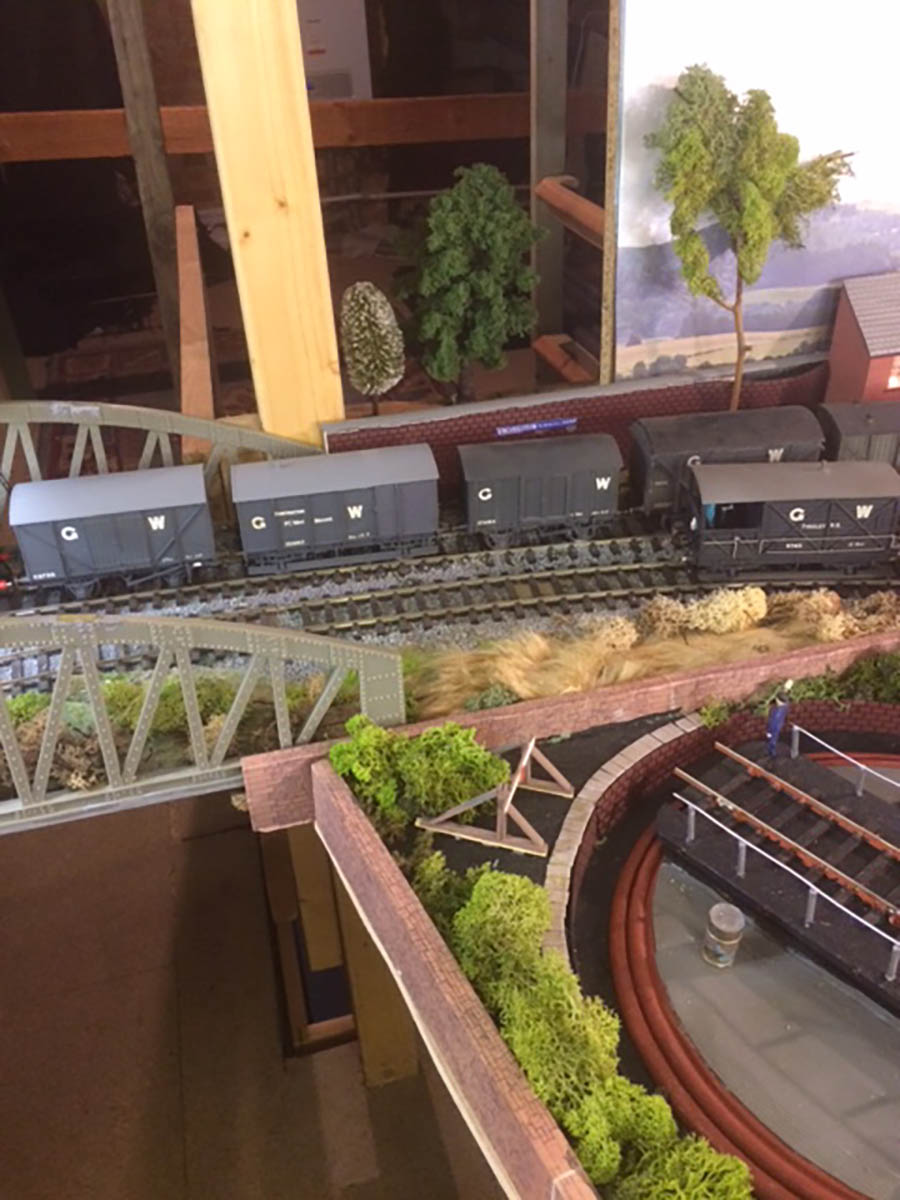





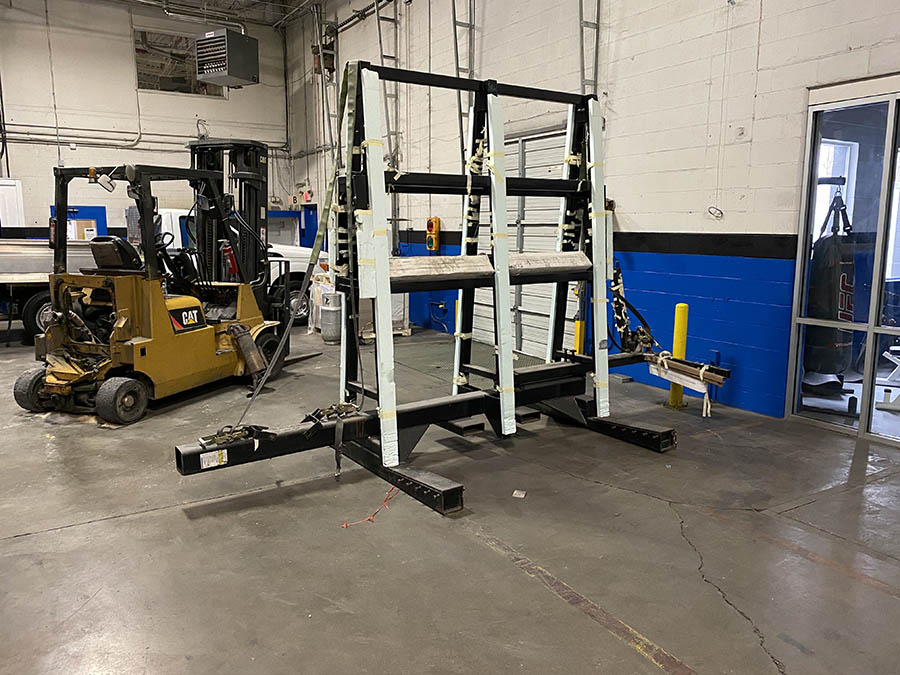


Thanks Dave, just 1 question if I may – what colour is the light on the Tardis? I have been researching if for ages, some say white while others say a light blue. I even asked a friend who worked on the set when William Hartnell was the Doctor, and he doesn’t remember.
For those old enough to remember thr original series in blsck & white, the lamp was a medium shade of blue.
police box blue!
Why may i ask are the rolling stock in the UK so small and silly looking ? Yet ur passenger cars are normal size as compared to the US ? Our Box cars typically are 50 ft long.
The Critic
Your best post yet. Thank you, thank you.
I particularly like Ken’s creative of scrap materials. Cuts down on rubbish (US: Garbage) waste too. Save the Planet!
And a message to Dave …
Can ah coom visit when this Covid nonsense is all over? Please!
And is that an East Lancs accent I can hear? Sounds just like my Grandad’s (Blackburn)
To Dave’s comment on backing model railroad cars, a few points.
First, backing is a great way to test how good our track actually is. Minor issues show up when backing that may not when cars are pulled.
Next, in the USA the “horn-hook” couplers that come on most cars and locomotives do not like backing up, they exert sideways forces on the center-line of the car which pushes them off the track. Replacing these with a Kaydee or McHenery coupler allows pushing the cars on their center-line of the car, and as important closer to the axle line.
Now to prototype, in America and all countries using knuckle type couplers, trains can be quite long. It is not uncommon to have trains 2 1/2 miles long. These can be pushed and routinely are. With the advent of “DP” Distributed Power – IE locomotives in the center of the train, in theory there is in theory no limit to the length of train.
Europe has decided that 45 – 60 cars is a long enough train and the hook and turnbuckle system is OK, the issue is that when backing, the bumpers can only take so much pressure, then they skip over the next one being pushed and damage happens. Guess having lots of shorter trains and train crews is good for the economy.
To Robert Brady… (The Critic)
Modern British freight equipment is more like American equipment as the nature of railroading has changed.
The older equipment reflected the realities of its time.
We “Yanks” tend to see the world through American eyes — We think most nations are like us… Big and lots of room. The reality is that most nations in the world are sized closer to our states (and in a couple of cases, our cities). Australia, China, and the old Soviet Union are the exceptions (and each is/was larger than the United State),
Great Britain is a nation that is about the size of California, maybe a tad larger but not much. (I live in California and was born in the Los Angeles area — It was my father who had traveled the world who informed me that London to Glasgow is about the same distance as Los Angeles to San Francisco.).
Britain is also an old nation — One of my pest control customers grew up in England, the school he went to was built in 1640 — What we know as America was barely 13 British colonies at the time his school was built.
Older British freight equipment (and older European equipment), “Goods Stock” if you will, reflected the realities of the businesses it served. American scale business really does not exist in much of the world and Britain is no exception.
During World War 1, light railways were used to get material to the front… These were 60 cm gauge — roughly 2 foot). In the time it took Hunslet to build roughly 50 locomotives for the front, Baldwin built over 400. And that was just narrow gauge and does not count the standard gauge locomotives Baldwin was building for both American use to the USRA patterns and also for European export! — ALCO and Davenport were just as busy!
The equipment reflects the use and the realities of place… Older British and European freight equipment was small because businesses were small and space was at a premium.
I laugh at the memes that show the High Speed rail in Japan, France, Germany, and China then have a picture of one of the Amtrak G.E. locos… It really shows how ignorant some Americans are of the world — This holds true for many other things that some of our Academics hold dear and use as “evidence” to show how “backwards” America is.
Nice work.!!! Mine is going to be something like that.
Al, Thanks a lot for what you do!! At 81 years old, I live in a nursing home and
cannot build any more so your news letter every day is like a bunch of sunshine.
I worked on the old Baldwin factory where they they blew a 7200 volt line fuse.
Those were the days!! My HO layout was 15×20 in a garage second floor. I built
a 50 amp , 18v supply and could run a seven unit consist before the rails got
hot enough to melt the ties!!! Talk about fun!!!. I was at a train show once and saw
a 150 car train of matched hoppers moving with a two unit consist!!!. Your posts
bring back so many great memories!! THANK-YOU AL. RJ
Question for you techno genius’s: years ago I came across a way to stop engines electrically at a dead end using a diode on one rail near the end. It would work for DC. How about DCC?
John Reynolds: I appreciate the history lesson And I took it as one.
Ken, that’s lovely, full of character, but the lamps in that stopblock are exactly where they’re going to get totalled by the first set of buffers to kiss it even gently. We usually just have one in the middle, on top.
Dave, that’s a testament to your tracklaying as mush as the couplings, well done. I model modern Italian in HO and many passenger trains there are push-pull rakes, they all work fine using the proprietary close-coupling systems from Roco etc, which fit into the NEM pockets on ‘swan-neck’ mounts that extend outwards on curves.
As to European wagon sizes, we run very frequent high speed passenger services so freights have to keep up and fit into passing loops, which is what limits our loadings, heaviest train in my area was the iron ore to Llanwern steelworks which was 3,000 tons. Until the ‘common carrier obligation’ law was removed in the sixties, the railway had to carry consignments of anything to anywhere for publicly listed prices, often unprofitably, and it was hard to get shippers to invest in modern terminals or wagon fleets, or to find investment funds to provide these for them. We’d been working with one hand tied behind our backs until then.
Congratulations to the guys who submitted the latest offerings with such great, clear and in-focus photos.
Fred ..re the Tardis , which of course is the old Police Box , they used to be the policeman’s telephone box …so if they needed to be contacted the light would flash on the top so ny policeman who could see it could go and answer the call ..and they were Blue …I know on video it looks near white , but thats the camera causing that ….as I did say a lot depends on the weight of the number of cars or trucks that can be used in a rake ….but for reversing this is limites , and of course the type of couplings can make a difference …if they are short it can cause the derailment on a curve ..as the buffers tend to catch and push the following one off the rails ….and Roger ..sorry dont do home visits , had a lot ask and if you allow one you get more so your privacy has gone ….besides my wife won’t allow it ..Sorry …dangerous Dave ..
Dave, It seems that in the videos you run your trains at relatively high speeds. Is this “scale speed” for your railroads?